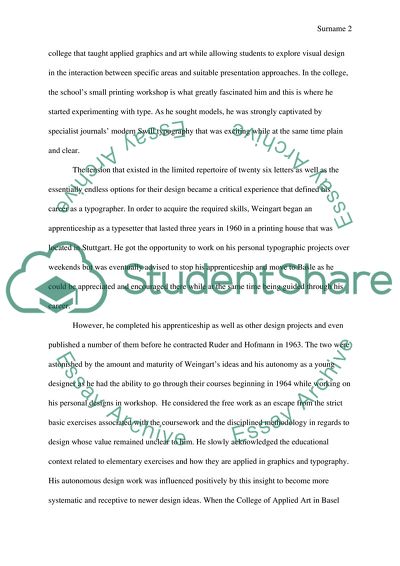Cite this document
(The Typographic Experiments by Wolfgang Weingart Essay, n.d.)
The Typographic Experiments by Wolfgang Weingart Essay. https://studentshare.org/visual-arts-film-studies/1881575-designer-research-paper
The Typographic Experiments by Wolfgang Weingart Essay. https://studentshare.org/visual-arts-film-studies/1881575-designer-research-paper
(The Typographic Experiments by Wolfgang Weingart Essay)
The Typographic Experiments by Wolfgang Weingart Essay. https://studentshare.org/visual-arts-film-studies/1881575-designer-research-paper.
The Typographic Experiments by Wolfgang Weingart Essay. https://studentshare.org/visual-arts-film-studies/1881575-designer-research-paper.
“The Typographic Experiments by Wolfgang Weingart Essay”. https://studentshare.org/visual-arts-film-studies/1881575-designer-research-paper.


